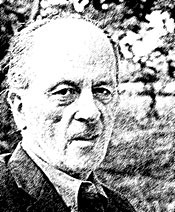Robert Campbell, FAIA, is the architecture critic of The Boston Globe.
 Robert Campbell, FAIA | |
Readers of Robert Campbell’s columns in our pages perhaps don’t know that The Boston Globe’s longtime architecture critic helped the General Services Administration select Thom Mayne and Morphosis to design the San Francisco Federal Building, completed in 2007. “I’ve never seen a building of his that didn’t have major flaws, but I felt he needed a client who could hold his feet to the fire,” Campbell says. He compares the U.S. to the Netherlands, where young architects have greater chances at larger commissions. “Mayne is still somewhat of an enfant terrible and is now only getting the work he has always wanted,” he says. “The Netherlands loves when young architects come up with new ideas.”
Campbell found one such new idea in Office dA’s Macallen building, a condominium development that opened in 2007 in South Boston. He particularly likes the way the architects turned a conventional developer-driven project into a sleek, sloping building—taking advantage of two different zoning requirements for height on the site—in keeping with the firm’s edgy reputation. Campbell says the lack of consensus about what makes good design makes it hard for an architect to justify one design approach over another. “It makes it easier for developers to build cheaply without feeling guilty,” he says, “but also developers from out of town just don’t feel the social pressure to build well.”

Macallen building
Perhaps the most written- about building in Boston last year was Diller Scofidio + Renfro’s Institute of Contemporary Art, perched on the Fan Pier waterfront. “It’s not an unconventional building, but for Boston, it was very daring,” says Campbell. “It’s all about media and views to the water and is really very successful.” Further afield, he admires Steven Holl’s Bloch Building at the Nelson-Atkins Museum of Art in Kansas City, Missouri—a building that is piling up critical appreciation—even though Campbell wonders how it will age. “The way those icebergs step down the hill is really magical,” he says. “And the channel glass being turned up and used as skylights–I’m not sure that’s ever been done before.”
Campbell views the hot topic of sustainability as perhaps finally putting an end to the debates about arcane design theory, and becoming a new version of what had been considered Regionalism. “Sustainable design is a great opportunity for architects to sell themselves as environmental experts,” he says. While sprawl is not as much a concern in Boston—a well-developed historic city—as it is in faster-growing cities, Campbell says the biggest environmental concern for the city remains the prospect of rising water levels, which he sees few architects addressing. “I can’t believe people are still developing big buildings on the harbor near sea level,” he muses. He also laments the view that high-rise buildings are the only answer to increasing urban density in the name of sustainability. “The density of Paris is just as high, if not higher, than cities that have tall buildings,” Campbell says. “In Midtown Manhattan, where every block is a single building with a single door, it becomes oppressive.”
And although the Massachusetts Institute of Technology has mostly completed its ambitious expansion plans, with Frank Gehry’s Stata Center (2004) and Steven Holl’s Simmons Hall (2003), Harvard University has embarked on a building spree with a sustainable bent. Campbell thinks Bruner/Cott’s conversion of the historic Blackstone Station, an old power plant along the Charles River, into offices for Harvard is a successful first step. However, he is anxious to see how Stefan Behnisch’s plans for the new Harvard Allston Science Complex develop, particularly since he considers Behnisch’s Genzyme Center (2003) in Cambridge, Massachusetts, to be a remarkable example of sustainable design. “It’s about making a much better place to work, not just saving energy, and those two things can reinforce one another,” he says.



Post a comment to this article
Report Abusive Comment